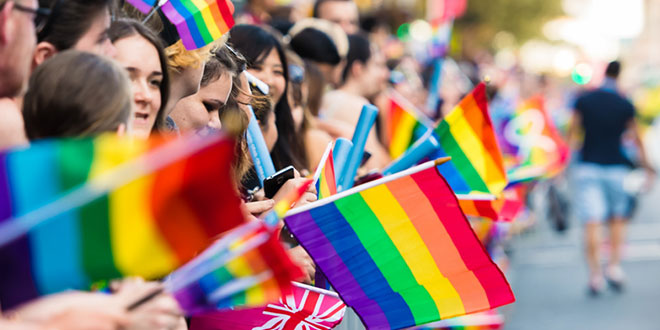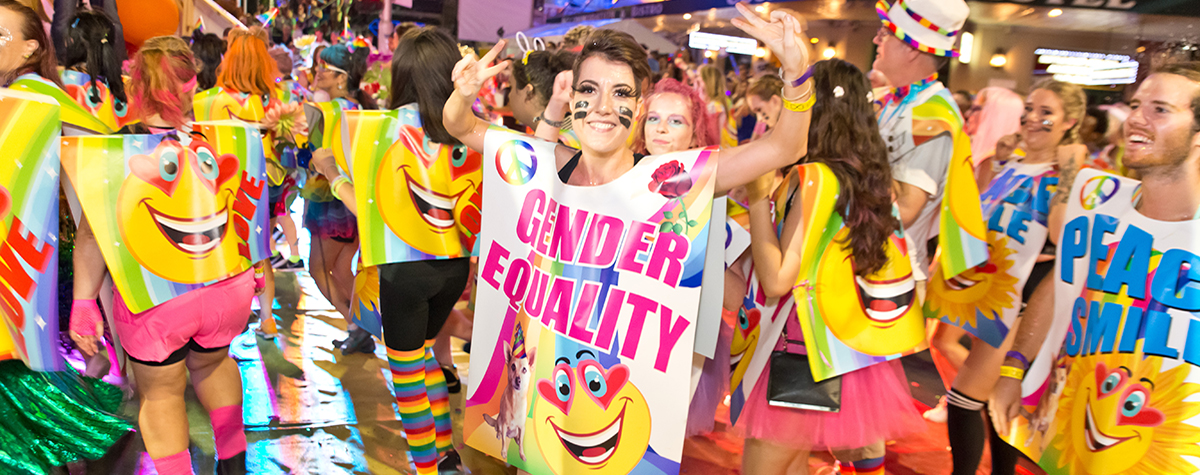
Sydney Mardi Gras (also known as Sydney Gay and Lesbian Mardi Gras) is a yearly festival with the theme of LGBTQI (Lesbian, Gay, Bisexual, and Transgender, Questioning, and Intersex), and is considered one of the largest festivals in the world in this category. This tradition was brought up in the late 70s when the Gay and Lesbian community started fighting for equality.
Today, the festivals can be a great way for international students to connect and learn more about Australia. Yet a lot of students ask, what really is Mardi Gras, and when did it start?
Mardi Gras refers to Carnival celebrations commencing on or after the Christian feasts of the Epiphany and culminating on the day before Ash Wednesday. Mardi Gras is French for “Fat Tuesday”, and reflects the practice of eating richer fatty foods on the last night of celebrations prior the ritual fasting of the Lenten season.
Mardi Grass can be traced back to the 1830s in New Orleans, when processions of maskers with carriages and horseback riders were held during Carnival time. However, the earliest reference to this Carnival appears in a 1781 report to the Spanish colonial governing body.
The Mardi Gras Carnival parades in New Orleans began to be organized by social clubs known as krewes, who used to light up their way with dazzling gaslight torches giving each event an air of romance and festivity. Today, there is usually one major parade each day, although the largest and most elaborate parades take place the last five days of the Mardi Gras season.
It might be interesting to note for our international students that Sydney Mardi Gras has become one of the biggest tourism attractions of Australia, bringing in about AU$30 million revenue every year (the highest record was AU$38 million in 1993 with 600,000 spectators at the parade).
The festival includes a variety of events such as the Parade and After Party, Bondi Beach Drag Races, Harbour Party, the academic discussion panel Queer Thinking, Mardi Gras Film Festival, as well as Fair Day, which attracts 70,000 people to Victoria Park, Sydney. The parade takes place through the Sydney CBD and snakes up to 1.7 kilometers, to the amusement of thousands of cheering spectators.

Sydney Mardi Gras has a history of nearly 40 years, and it has become a showcase of support for gender equality and the LBGTQI community. Every year, the parade sees tons of people marching proudly by elaborate floats in colorful costumes, dancing to exciting music, engaging with spectators and participants of other floats; and most importantly, sharing the idea that everybody has the same rights regardless of their sexual identity or inclination.
In the end, it all boils down to education. We educate ourselves to following a certain code of conduct in society without which coexistence wouldn’t be possible. Likewise, why don’t we inspire our community with the Mardi Gras values of freedom and respect for other peoples’ choices?
Let’s make such human values support the curriculum in our business and English schools? And let’s keep working to instill respect and freedom in our students and citizens. This will make people’s ideas more and better connected, and help our creativity flourish.

Recent Comments